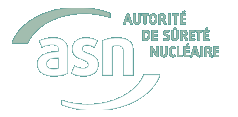| Chapter 11 |
- General introduction
- Annual traffic
- Industrial participants
- Modes of transport
- Roles of the public authorities
- Fields of competence of the various authorities
- Specific intervention for the different package types
- ASN responsibilities regarding regulation of the safe transport of radioactive materials
- Administrative authorisations
- Regulating the transport of radioactive materials
- Incidents and accidents
- Package handling events
- Incidents and accidents during actual transport
- Nonconformity of container or content
- Transport infrastructures hazard studies
- "Radioactive material transport" emergency plan (PU-TMR)
- International action
- Outlook
|
|
As in 2009, ASN will in 2010 be continuing its inspections at the designers, manufacturers, users, carriers and consignors of radioactive material packages.
The inspections carried out in 2008 and 2009 show that progress has been made, including in the drafting of the radiation protection programmes that have been mandatory since 2001, but that there is still room for improvement. In particular for packages that do not require approval by the competent authority, ASN considers the situation to be unsatisfactory. Whether through regulations conformity demonstrations or checks prior to shipment, the inspections brought a large number of shortcomings to light. This situation is all the more worrying as these packages are the source of a large percentage of the incidents that occurred in 2009.
Consequently, ASN will continue to monitor non-approved packages, particularly in the medical, conventional industry and research sectors, taking advantage of the radiation protection inspections it already carries out in these fields. ASN will therefore continue to carry out reconnaissance to gain a clearer picture of the situation.
As in previous years, ASN will in 2010 continue to test its response organisation designed to deal with an accident involving a transport of radioactive materials. It considers that emergency exercises in the transport field are of particular importance. Given that an accident can take place anywhere, especially in those départements in which there are no basic nuclear installations, the local stakeholders are liable to be inadequately prepared to deal with such an event. These national exercises, in association with local exercises, make a contribution to training and educating the protagonists. In 2010, ASN will continue its efforts to harmonise and strengthen the emergency plans for dealing with transport accidents through the working group which it set up in 2008, involving representatives from the industrial nuclear world.
ASN is also looking to improve the regulation of the transport of dangerous goods within nuclear sites. To do this, it will in the next two years be producing supplements to the regulations applicable to nuclear installations on this point.
Finally, ASN will be continuing the technical background work prior to issue of approval certificates: periodic safety reviews of existing package models and the approval of new models incorporating innovative design features contribute to the overall upgrading of transport safety.
ASN will also be aiming to give an increasingly international dimension to its action. ASN intends to intervene as far upstream as possible in the drafting of IAEA’s recommendations. As, by their very nature, the regulations concerning the transport of radioactive materials are the subject of international exchanges, harmonised interpretation must be a major objective for ASN. This was the reason for the MoU for mutual recognition of the certificates issued by each of the authorities, signed with the British authority in February 2006, which was extended in 2008. A similar approach could be adopted in the next few years with the German and American authorities.
|




